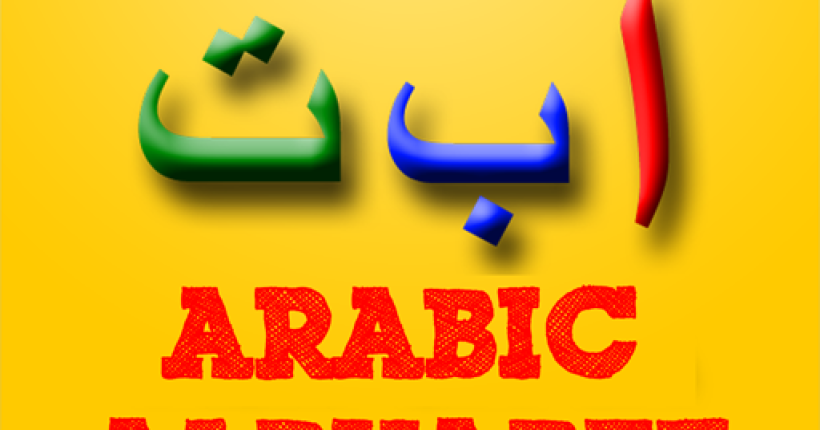The question of how to write Arabic letters may seem challenging. At first glance, writing Arabic letters can feel hard to do, but with a little guidance, it can be enjoyable and fulfilling.
No matter whether you are a first-time student ready to read and write in Arabic or a parent helping your child with the Arabic alphabet, following the importance of proper methods and teaching each letter step-by-step makes it easier and enjoyable for you.
In this article, we will provide you with tips, helpful strategies and exercises that will help you master writing Arabic letters easily and quickly.
Step-by-Step Guide: Writing Arabic Letters
It is much easier to learn to write Arabic letters if you have an efficient, step-by-step guide. Here is where to begin:
1. Start with Simple Letters
Begin with letters of simple forms and easy identification, such as ا (Alif), ب (Ba), and م (Meem).
Study them in isolation.
Practice each letter a few times until you are ready.
2. Practice Letter Shapes
Arabic letters change their shapes based on their place in a word.
Practice every letter in four ways:
Isolated – the single letter.
Initial – at the beginning of a word.
Medial – in the middle of a word.
Final – at the end of a word.
Practice each form over and over again to become familiar with the strokes and curves.
3. Practice Letter Combinations
Arabic is a script where letters usually connect to make words.
Practice simple combinations such as ب + ا = با.
Focus on smooth, flowing connections between letters.
4. Tracing Activities
The answer to the how to write Arabic letters is always using tracing activities. Tracing is a fun and enjoyable way to learn better handwriting.
Simply use printable worksheets or applications that allow you to trace letters along dashed lines.
It helps with memorizing the shapes and developing a better sense of control with your hands.
5. Combining letters to make simple words
Once you feel comfortable with letters, begin writing short words, such as your name, hello/goodbye, etc.; (the most frequently used words).
It is all about repetition! Write these words over and over, day by day, as you grow used to the letters linked together in various different positions.
6. Practice often
The real secret is practice! Don’t feel that you need more than 10–15 minutes of practice every day for it to be effective.
7. Devote a special notebook to writing in Arabic.
Be sure to praise yourself every time you make progress; it is a good thing for your motivation and makes learning to write more enjoyable.
Simple tips to make learning fun and easy
Practicing to write Arabic letters does not have to be dull! Try these simple tips to make learning and practice more enjoyable and rewarding:
Employ Colored Worksheets and Pens
Writing different colo how to write Arabic letters makes learning more interesting to the eyes and helps to remember shapes easily. This is how to write Arabic letters in a fun way!
Practice Using Apps or Online Lessons
Interactive programs provide instant feedback, stimulating exercises, and step-by-step teaching.
Play Games and Quizzes
Turn practice into a game with matching letters, sounding out letters, or word searches.
Write Your Name and Favorite Words
Make your practice enjoyable by writing words that you like. This is more personal and remembered.
Set Small Goals
Learn a few letters at a time instead of all at once. Small wins keep motivation high.
Common Mistakes Beginners Make
Even when practicing how to write Arabic letters in a step-by-step manner, new learners tend to commit a few typical errors. Being aware of them in advance saves you frustration:
Confusing Similar Letters
The letters ب, ت, ث look quite similar. Look closely at dots and shapes to differentiate them.
Writing Letters Separately When They Must Be Joined
Keep in mind that Arabic letters join together in most words. Practice smooth joins to enhance handwriting.
Overlooking Correct Stroke Direction
Writing in the correct direction makes letters precise and lovely.
Skipping Practice Daily
Unsteady practice hinders progress. Even brief daily practice is superior to lengthy, irregular practice.
Getting Discouraged Too Quickly
Mistakes are inevitable when learning. Acknowledge small accomplishment to maintain motivation.
Recommended Resources for Learning How to Write Arabic Letters
With practice comes mastery of the art of writing Arabic letters. Learning becomes easy once you have the right tools and resources at hand. Some of the best options for helping you learn include:
1. Interactive Online Courses
Online courses provide step-by-step, guided lessons on every Arabic letter.
Many of them include videos, practice exercises, and quizzes to reinforce learning.
Select courses that teach writing along with pronunciation so that you learn both together.
Example: Beginner courses in Arabic with Tareequl Jannah include exercises designed especially for beginners with simple steps.
2. Mobile Apps for Arabic Writing
Mobile apps are convenient for handheld learning, with interactive tracing exercises and instant feedback. Here is the best apps for how to write Arabic letters easily and have fun:
Write It! Arabic – enables you to trace out the letters and guides you through step-by-step.
Arabic Alphabet – includes games and quizzes to recognize the letters.
Duolingo – has rudimentary Arabic writing along with reading and listening practice.
They make practice enjoyable and help with memory reinforcement through repetition.
3. Printable Worksheets and Practice Books
Printable worksheets allow you to practice handwriting on your own, perfect for intense study. Worksheets typically have:
Dotted letters to practice tracing
Letters in different forms (isolated, initial, medial, final)
Simple words to practice putting letters together
Numerous websites provide free or paid beginner worksheets, and it is simple to begin practicing right away.
4. YouTube Tutorials and Video Guides
Video tutorials are perfect for visual learners who find it helpful to watch proper stroke methods being demonstrated.
Numerous Arabic instructors give step-by-step instructions with letter forms, connections, and pronunciation demonstrated.
Learn Arabic with Maha or Arabic Khatawaat channels provide beginner lessons with clear visual demonstrations.
5. Online Communities and Study Groups
Being part of a community will keep you in line and motivated.
Having a community in Facebook groups, Discord servers, or Reddit forums for Arabic learners allows you to:
Share practice sheets
Ask questions about challenging letters
Celebrate with fellow learners
Learning in a group makes it more interactive and engaging.
6. Arabic Calligraphy Tools
For those who enjoy doing creative exercises, practicing letters using calligraphy pens or brushes can make the exercise fun and artistic.
Calligraphy exercise strengthens hand control, stroke precision, and memorization of letters.
You can incorporate calligraphy exercises on worksheets to further learn as both instructional and creative.
Now that you know how to write Arabic letters, are you ready to step up? Take a beginner-level Arabic course, download interactive worksheets, or start an app today. Every little step you take strengthens your confidence and makes learning Arabic letters a fun, easy, and rewarding experience!


